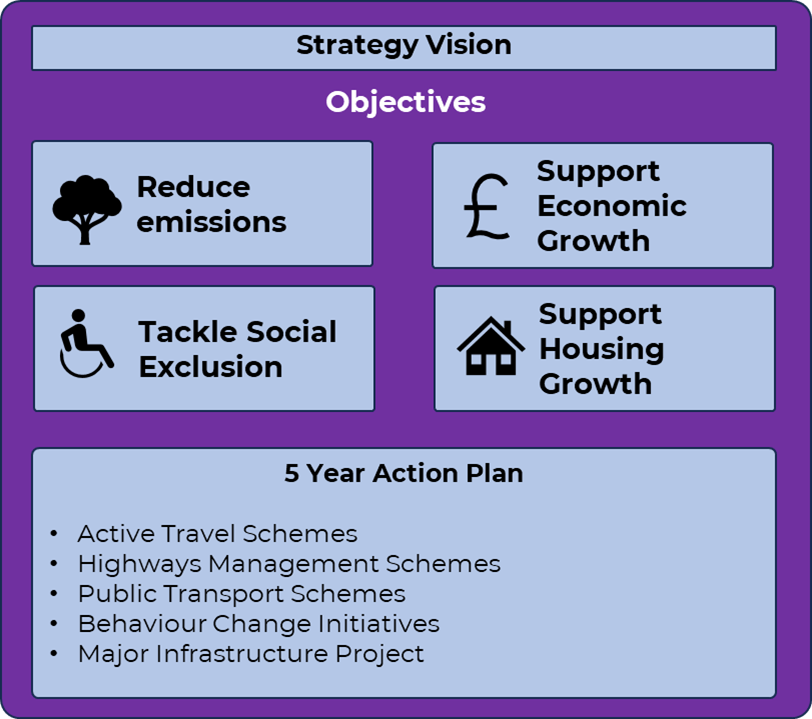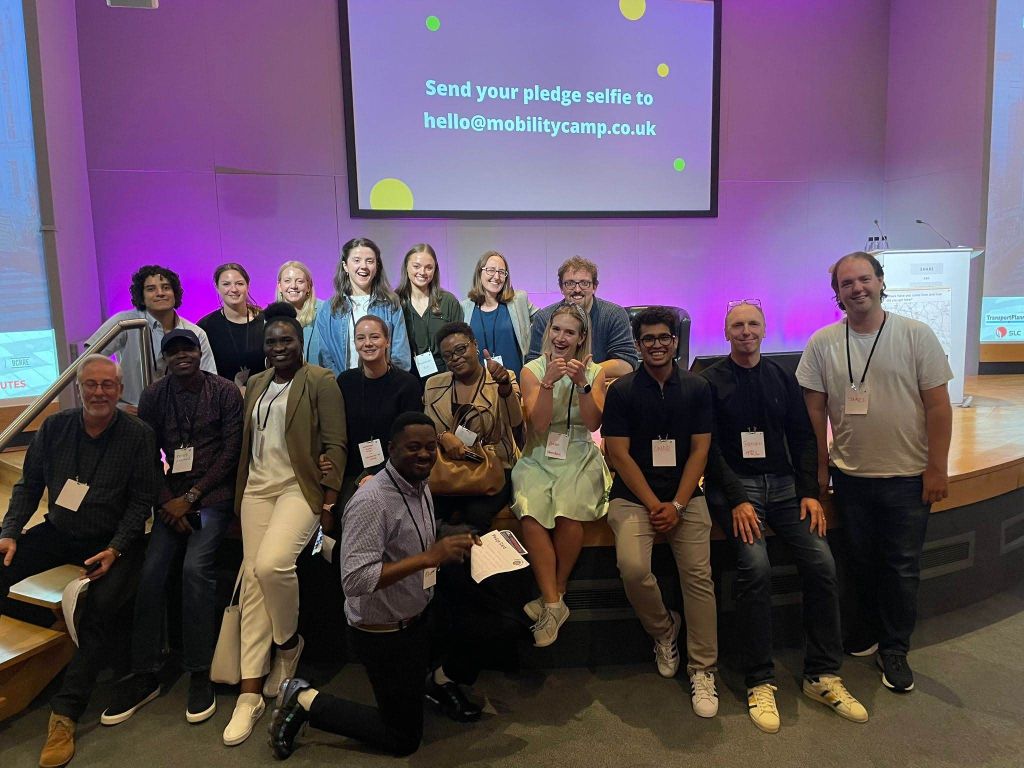Good day my good friend.
As you read this newsletter, I will be on a train heading back to my ancestral homeland of…North Devon. Barnstaple specifically, a lovely market town that I have posted about before, and will no doubt do so many times more. One recommendation that I have for any of you thinking of spending some time in Gods Own Country (not Yorkshire, or Northumberland before you say anything), grad yourself a Hocking’s Ice Cream. Its wonderful, it truly is.
If you like this newsletter, please share it with someone else who you think will love it. The main way my audience grows is through your recommendations. I will love you forever if you do. 😃
I have co-authored a book on Mobility-as-a-Service, which is a comprehensive guide on this important new transport service. It is available from the Institution of Engineering and Technology and now Amazon. 📕
🕵️♀️ Mission Improbable
The biggest failing of a majority of transport strategies that I have seen (among many) is that they usually do the action planning bit of the strategy (i.e. the critical bit) really badly. This is usually in one of three ways:
- It doesn’t contain any actions at all, focussing instead on vaguely worded ‘commitments’ that seek to capture everything but say nothing. You know, words like “we commit to encouraging people to change how they travel.”
- The action plan becomes a long list of every possible scheme that the organisation may want to deliver, with the vain hope that including it somewhere in the strategy may give officers a ‘hook’ on which to bid for projects.
- The actions are completely disconnected from the objectives and the vision. How many transport strategies have you seen that commit to achieving net zero emissions on one page, yet on the next say how great this new road scheme will be.
All of this is for understandable reasons. Not only is funding and resources uncertain, but the majority of people who write transport strategies are action planners. We want to do things to make the world better. Long lists of schemes make us happy in that regard. When people start talking about funny things like uncertainty and visioning – that’s a bit weird isn’t it?
But what if there was a way to try and traverse this kind of issue? In recent times, I have been taking a much keener interest in the concept of mission-based policy. For readers of the work of Mariana Mazzucato you will probably know exactly what I am talking about. But for the rest of you who have lives and don’t read up about policy making in your spare time, the synopsis is this.
Mission-based policy captures and articulates concrete problems, arising from identified challenges, and seeks to galvanise action in response to these in a cross-sectoral manner. Adapting the words of Mariana Mazzucato somewhat, this recognises that:
- Achieving this mission recognises that setting a direction and a pace is necessary
- Investment and risk-taking is often required by a variety of parties, most notably the public sector
- It balances some top-down setting of direction with bottom-up approach to experimentation and trial and error
- Missions need to be built on consensus and not on diktat
- Missions need to be well-defined and not wishy-washy
The typical transport strategy looks like something along these lines. With very distinct sections setting out objectives, and then the delivery plan. Simple, has been used for years. What’s not to love?

However, a mission-based strategy looks somewhat different to this. There are two key differences. The first being that the missions replace the objectives, and are much more action-oriented. The second is in the action planning, where instead of a list of schemes, a series of integrated policy packages are designed in order to achieve set goals by a set time period.

What this means is that the role of actions within the strategy is both raised up and transformed. In a missions-based strategy, what you are trying to achieve is front and centre of the strategy, and it gives room within the delivery plan for people actually delivering the strategy to experiment. So long as the outcome or the target in the interim is achieved.
This is not to say that the strategy should not contain a list of schemes. It can. But its not everything. In fact, the strategy really says “so long as you achieve this outcome, I don’t really mind what you do exactly.”
This approach can also fundamentally change the way by which we engage in the development of strategies, especially with key stakeholders. It does so by framing early engagement questions away from simply one of what our challenges are, to one of translating those challenges into a guiding mission for the strategy. Shifting this discussion away from challenges shifts it from reductionist and negative, to one of “well what does good look like?”
To me, this makes for a much more direct and delivery focussed way of developing strategy that seeks to achieve an outcome, and not simply be a policy document. Over the coming weeks I hope to expand on this concept, particularly covering definition of missions and dealing with uncertainty. This is all very much a work in progress, and if any of you have any strong views on this, I would very much like to hear them.
What you can do: If you want to explore mission-orientated policy further, I recommend this report on innovation policy, this blog by Nesta, and this paper by OECD.
👩🎓 From academia
The clever clogs at our universities have published the following excellent research. Where you are unable to access the research, email the author – they may give you a copy of the research paper for free.
The role of new green construction in neighborhood change and gentrification
TL:DR – Building green homes may result in gentrification. Maybe.
Interventions reducing car usage: Systematic review and meta-analysis
TL:DR – There is a lot that we can do. We just need to actually do it.
Enhancing public transport use: The influence of soft pull interventions
TL:DR – Again, there is a lot we can do to make using public transport seem more sexy. We just need to do it.
TL:DR – They face a HECK of a lot of issues, and next to nothing is being done. Not good enough.
✊ Awesome people doing awesome things
The Zag List of Mobility Change Makers is celebrating all of the people doing brilliant work in making the world of transport and micro-mobility a better place. A very special mention must go to good friends and all-round good eggs Georgia Yexley, Sandra Witzel, Irene McAleese, and Isabelle Clements, who are deservedly on the list.
📺 On the (You)Tube
The always-excellent Geoff Marshall runs an occasional series where he visits request stops on the UK rail network. This latest video is brilliant as he visits one of the most iconic landmarks on the UK rail network – Barmouth Bridge.
🖼 Graphic Design

Cycling Traffic Levels in England by year (Source: Department for Transport)
Bad news. Cycling levels are down compared to last year. The good news is that they are still way up on pre-COVID levels.
📚 Random Things
These links are meant to make you think about the things that affect our world in transport, and not just think about transport itself. I hope that you enjoy them.
- Can the market in voluntary carbon credits help reduce global emissions in line with Paris Agreement targets? (Science)
- Working from home and the US-Europe divide (The Economist)
- Debunking myths about populism in power (The Loop)
- Is robotics about to have its own ChatGPT moment? (MIT Technology Review)
- American Myths of European Poverty (Pedestrian Observations)
👍 Your feedback is essential
I want to make the newsletter better. To do this, I need your feedback. Just fill in the 3 question survey form by clicking on the below button to provide me with quick feedback, that I can put into action. Thank you so much.




